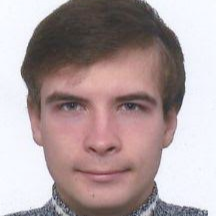
Volodymyr V. Pogorelov
Work place: Faculty of Applied Mathematics, National Technical University of Ukraine "Igor Sikorsky Kyiv Polytechnic Institute", Kyiv, Ukraine
E-mail: volodymyr.pogorelov@gmail.com
Website:
Research Interests: Artificial Intelligence, Neural Networks, Pattern Recognition, Computer Networks, Speech Recognition, Theory of Computation, Computability Theory, Models of Computation
Biography
Volodymyr V. Pogorelov graduated from Faculty of Applied Mathematics, National Technical University of Ukraine "Igor Sikorsky Kyiv Polytechnic Institute" in 2014. He is currently a PhD student in Computer Science at National Technical University of Ukraine "Igor Sikorsky Kyiv Polytechnic Institute". He has currently published 9 publications.
His research interests are cyber-attack recognition, neural networks, artificial intelligence, recognition of voice signals, functional programming, theory of formal languages and compilation.
Author Articles
Determination of Structural Parameters of Multilayer Perceptron Designed to Estimate Parameters of Technical Systems
By Zhengbing Hu Igor A. Tereykovskiy Lyudmila O. Tereykovska Volodymyr V. Pogorelov
DOI: https://doi.org/10.5815/ijisa.2017.10.07, Pub. Date: 8 Oct. 2017
The paper is dedicated to the problem of efficiency increasing in case of applying multilayer perceptron in context of parameters estimation for technical systems. It is shown that the increase of efficiency is possible by adaptation of structure of the multilayer perceptron to the problem specification set. It is revealed that the structure adaptation lies in the determination the following parameters:
1. The number of hidden neuron layers;
2. The number of neurons within each layer.
In terms of the paper, we introduce mathematical apparatus that allows conducting the structure adaptation for minimization of the relative error of the neuro-network model generalization. A numerical experiment to demonstrate efficiency of the mathematical apparatus was developed and described in terms of the article. Further research in this sphere lies in the development of a method for calculation of optimum relationship between the number of the hidden neuron layers and the number of hidden neurons within each layer.
Other Articles
Subscribe to receive issue release notifications and newsletters from MECS Press journals